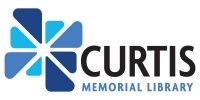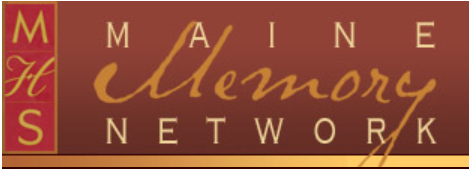Recent Genealogy Posts:
Genealogy Get-Together Presentations
These downloadable presentations — Genetic Genealogy and Getting More from FamilySearch — were provided by Lynne Holland from the first two February Genealogy Get-togethers at Curtis Memorial Library. If you weren’t able to attend they provide a great overview of the classes.
Click here to download Genetic Genealogy.
Click here to download Getting More from FamilySearch.
(Note: If you need help downloading these presentations, please contact Michael Gorzka at mgorzka@curtislibrary.com.)
The next Genealogy Get-together will be held on Thursday, February 23 at 5:30pm in the library’s Seminar Room and will focus on “Technology Tools to Help Your Genealogy Research”. There will also be a class held on Thursday, March 2 at 5:30 on “Brick-wall Problem Solving Ideas”. Please plan to join us for both dates.
Search versus Research

My favorite point was when the speaker talked about the difference between a genealogy “search” and genealogy “research”. As someone who is happy to dive into an internet search without much rhyme or reason (with predictable results), this concept particularly spoke to me.
A search is basically what I just described – jumping into the internet or any other resource with a very general idea of what you want (I’ll see if I can find anyone named Joe Smith who lived in Kansas in 1890). You get one result and go off down that path. Then you find another result and go off down that path. By the time you are done, you are frustrated and can’t even remember the sources you looked at and what you learned!
Research is very different. Research is the process of defining a very specific problem that you want to research (I want to find out the date of birth of my grandmother). You relook at all of the information you already have and confirm it. Then, you make a list of new potential records to check and alternative records that might provide clues. Finally, you incorporate FAN (friends, associates, neighbors) research to identify if there are clues there. Basically, research is a methodical, carefully thought out process that looks at all available information possibilities, not just the obvious ones.
I intend to go back to my current search focus and define a research process that is much more careful and intentional than what I’ve done in the past. Who knows? I might actually learn something! Happy research.
Tips to Help Organize

The first point that I liked was to pick one type of material to organize and focus on it. In other words organize your paper or your books or your digital records or your photographs. Don’t start and try to do them ALL at the same time. You’ll never get anything done.
Once you have identified your area of focus do an inventory. What materials do you have? Put together a list or a spreadsheet. When you know the extent of what you have it becomes easier to “see” an organizing system that makes sense to you.
The next step is then to decide how to organize. I like to organize by surnames. Some options might include color coding by family name, develop a numbering system, or organizing families on a timeline by starting with the oldest family member you can find (ancestors of John Q. Smith), etc.
The speaker talked about a numbering system and even though I have never done that, I liked the concept. Her point was that if you develop an index of the numbering system, it becomes very easy to find the person you want whereas if you try to simply use last names, it can become hard to find the person you want because so many individuals carried family names down through generations.
The speaker also did address the paper/digital issue a bit. She suggested that however you organize one should be the same process you use for the other. That way you aren’t trying to keep two different methods of organization in your head.
Finally, she emphasized the need to store original materials away from outside walls (the fluctuation in temperature is much less on inside walls in your house); keep newspaper stored away from other types of paper because the acid in newspaper can leach into other types of paper; and finally, schedule one day on a regular basis to maintain your genealogy materials.
I hope these are helpful tips – happy research!
Collections of the Maine Historical Society
Curtis Memorial Library’s Genealogy Room contains both genealogy information and information on local history. We find, though, that we fluctuate on just what we mean by local. Does it refer to New England? Maine? Cumberland County? But we don’t want to leave out resources from Sagadahoc County… We generally try to include resources that are within a 30 mile radius of Brunswick. However, we are a staff that never says never, so we try to look at resources on a case-by-case basis.
The valuable Collections of the Maine Historical Society is an example of just such a resource. Series One consists of 10 volumes published from 1931-1891. They contain two major town histories: “History of Portland, Part I” by William Willis, which appeared in Volume 1; and “History of Scarborough” by William S. Southgate, which takes up much of Volume 3. Volume 2 contains reprints of two important but rare seventeenth century publications: “Briefe Narration” by Sir Ferdinando Gorges; and “Voyage to New England” by Christopher Levett. These were originally published in London in 1658 and 1628 respectively. Volume 10 (1891) is a cumulative index for the first nine volumes.
Curtis owns volumes I-VIII of the first series, but online versions can be found on the web by searching Google Books. We think that while it is great to discover information on the web, there is nothing like perusing the original printed books.
Documentary History of the State of Maine was begun by the society in 1869. (“Second Series” is included in the title, which is a little confusing because there is also a Second Series of Collections of the Maine Historical Society.) This collection of volumes, 24 in all, includes the Trelawney Papers, Baxter Manuscripts and Farnham Papers.
The series begins with the age of discovery and includes “History of Discovery of Maine” by J. G. Kohl. Also included are articles on colonization, and Richard Hakluyt’s “Discourse Concerning Western Planting” written in 1584. This document is an important contribution to the knowledge of early voyages to the New World.
The Trelawney Papers give an account of a fishing and trading colony in Maine in the 1630s and 1640s. The colony was managed by John Winter, for his father-in-law, Robert Trelawney, and Trelawney’s partner Moses Goodyear, and was located on Richmond’s Island off Cape Elizabeth.
Curtis has all 24 volumes of the Documentary History of the State of Maine, Second Series. Many of the documents are fascinating reads. Who knows, you might even stumble across an ancestor or two in these accounts.
Below are links to some genealogy resources – please note that HeritageQuest requires a Portland Public Library (PPL) card. For information on getting a PPL card (all Cumberland County residents are eligible), click here. Curtis Library has a card and can use it to get you access when you are in the library. Access to American Ancestors is through Curtis Library’s subscription and can only be used from inside the library.








